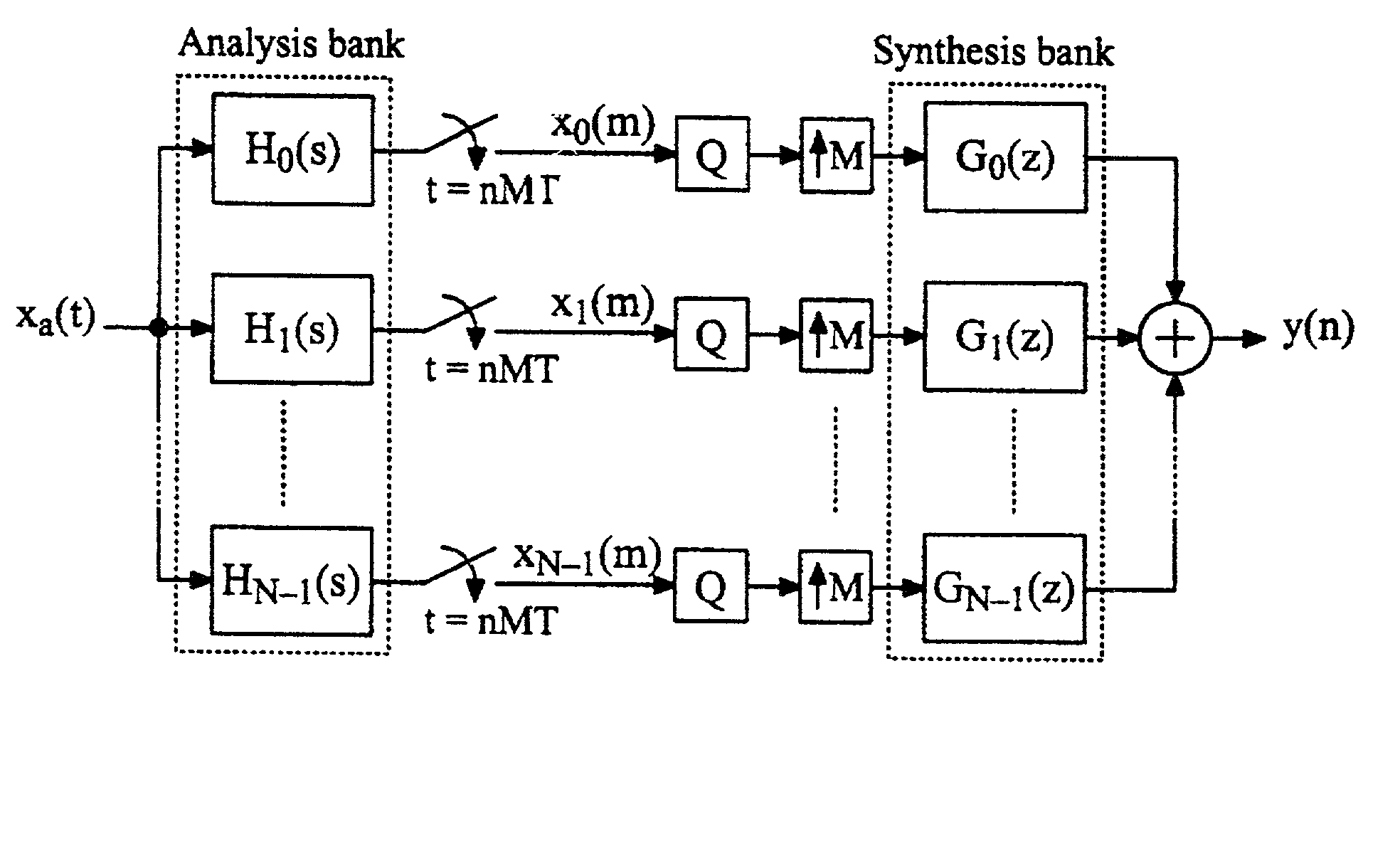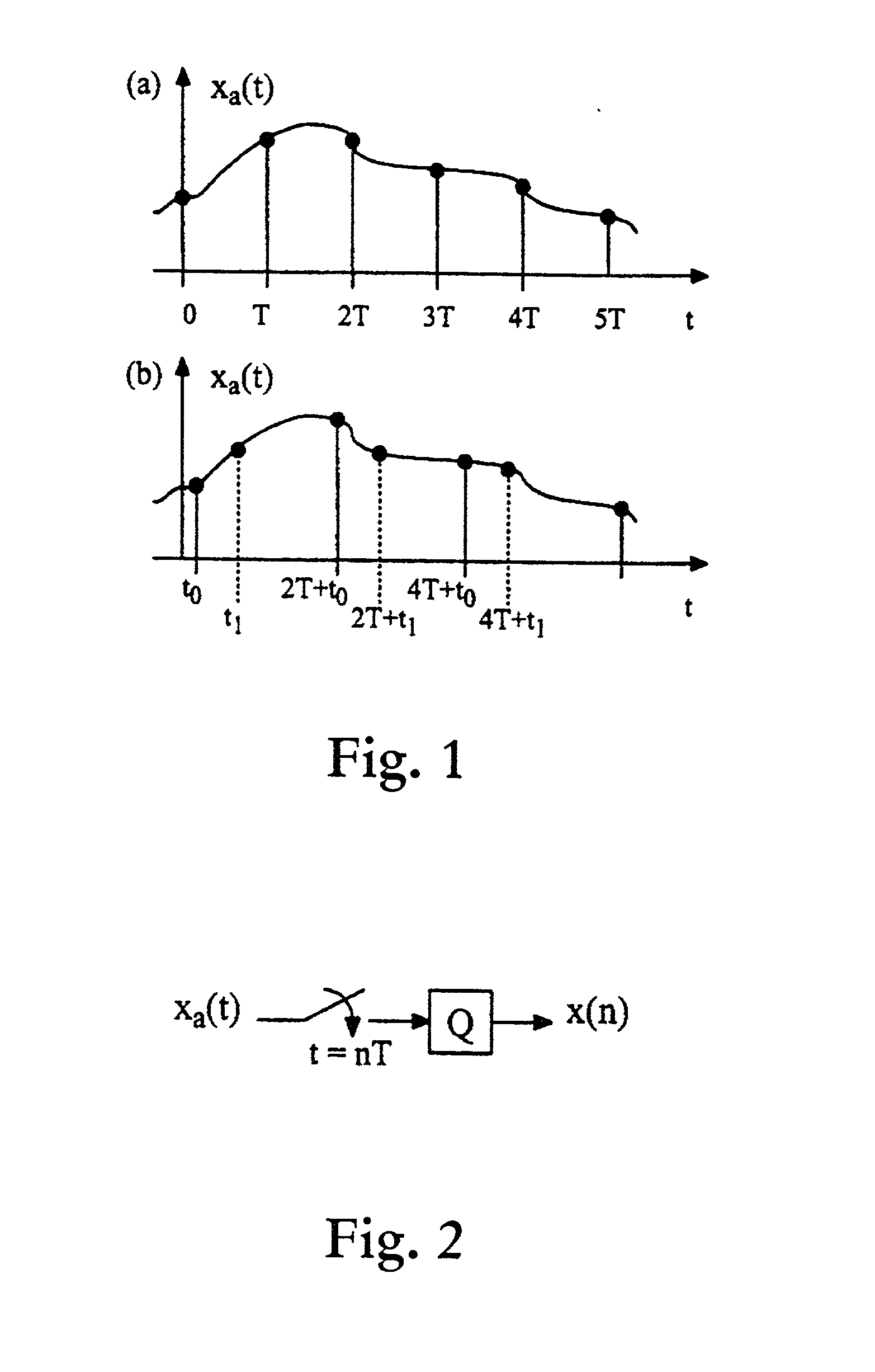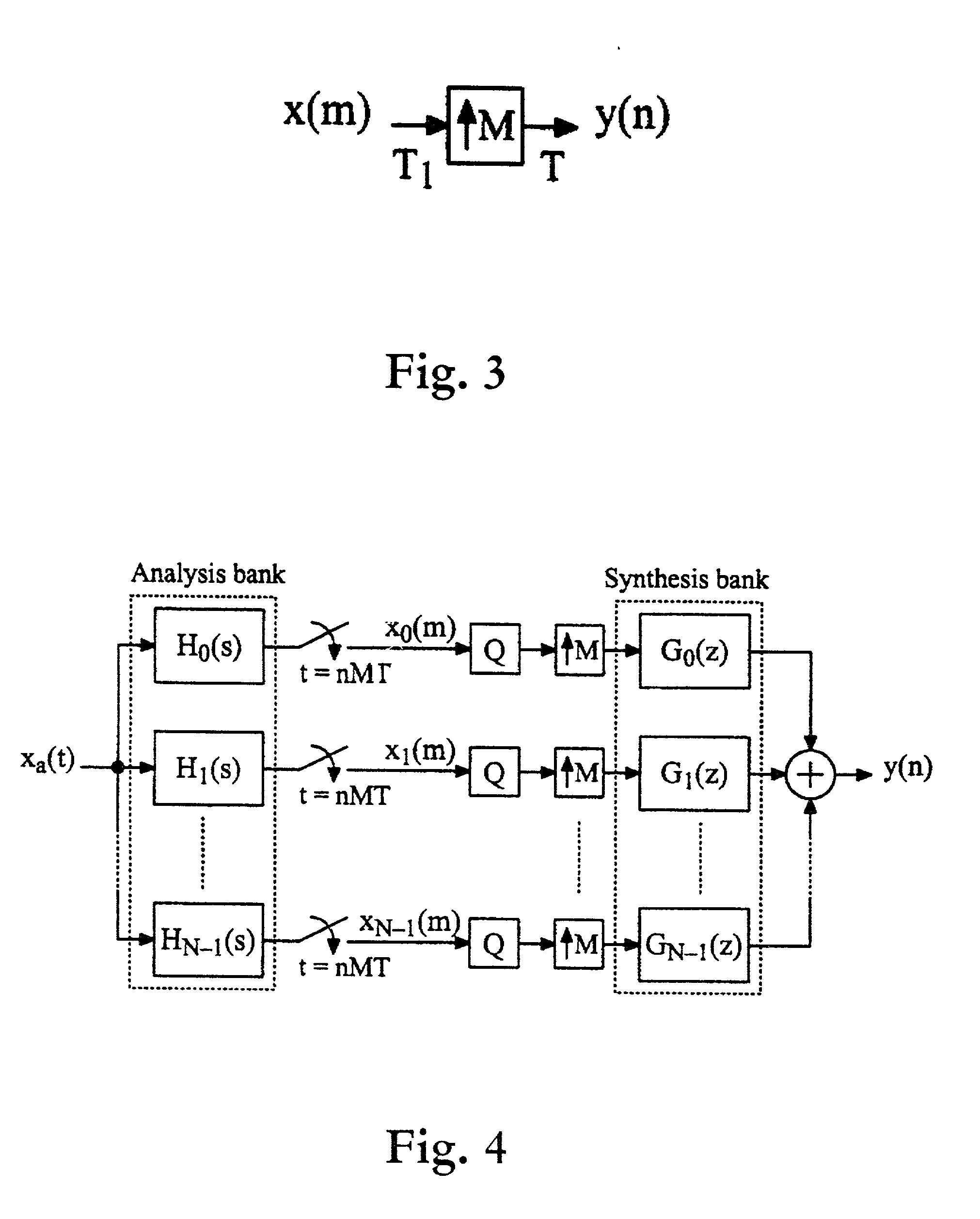Reconstruction of nonuniformly sampled bandlimited signals
a bandlimited signal and non-uniform sampling technology, applied in the field of non-uniform sampling of bandlimited signals, can solve the problems of non-uniform sampling of signals, inability to achieve functions, and inability to easily, if at all possible, achieve functions
- Summary
- Abstract
- Description
- Claims
- Application Information
AI Technical Summary
Benefits of technology
Problems solved by technology
Method used
Image
Examples
case b (
[0075] Case B (RPR case): In this case x.sub.a(t) is bandlimited according to eq. (21). Let G.sub.k(e.sup.j.omega.T) be 2.pi.-periodic filters given by eq. (35), where A.sub.k(e.sup.j.omega.T) are some arbitrary complex functions. From eqs. (31) and (35) we obtain eq. (36), where A(j.omega.) is given by eq. (37).
[0076] For RPR it is required that V.sub.p(j.omega.) as given by eq. (36) fulfils eq. (28). That is, RPR is obtained if, again eq. (34) is satisfied.
[0077] How to compute the a.sub.k's is next considered. For both PR and RPR (Cases A and B), eq. (34) must be fulfilled. This equation can be written in matrix form as eq. (38), where B is a (2K.sub.0+1)xN matrix according to eq. (39), wherein the u.sub.k's are given by eq. (40). Further, a is a column vector with N elements and c is a column vector with 2K.sub.0+1 elements according to eqs. (41) and (42), respectively, where T stands for the transpose (without complex conjugate). The a.sub.k's are the unknowns whereas the c.sub...
case 1
[0079] 2K.sub.0+1=N. In this case, the number of unknowns equals the number of equations. The a.sub.k's can in this case be uniquely determined under the conditions stated by the following theorem.
[0080] Theorem 1: If B and c are as given by eqs. (39) and (42), respectively, 2K.sub.0+1=N, and t.sub.k.noteq.t.sub.m+MTr, k.noteq.m, r.epsilon.Z, then there exists a unique a satisfying eq. (38), and thereby also unique a.sub.k's satisfying eq. (34). Further, all the a.sub.k's in a are real-valued constants.
[0081] Proof: We first prove that there exists a unique solution. Since 2K.sub.0+1=N, B is a square N.times.N matrix. If B is nonsingular, then a is uniquely determined by eq. (44), where B.sup.-1 is the inverse of B. It thus suffices to show that B is nonsingular under the stated conditions. To this end, we first observe that B as given by eq. (39) can be written as in eq. (45), where A is given by eq. (46) and C is a diagonal matrix according to eq. (47).
[0082] The matrix A is a Va...
case 2
[0084] 2K.sub.0+1 <N In this case, the number of unknowns exceeds the number of equations. We can therefore impose L=N-2K.sub.0-1 additional linear constraints among the a.sub.k's and still satisfy eq. (34). Here, we restrict ourselves to the case in which the L a.sub.k's for k=N-L+1, N-L+2, . . . , N, are fixed to some constants. This case covers the conventional time-interleaved ADCs with an even number of channels. Since L a.sub.k's are free we could of course set them to zero in the case of which the corresponding channels would be removed. In that sense, there is no need to consider the cases having an even number of channels. However, as we shall see below, it may be worth considering these cases in order to reduce the quantization noise at the output of the overall system.
[0085] The system of linear equations to be solved can here be written in matrix form as eq. (51) with {circumflex over (B)} being an N.times.N matrix, and a and c being column vectors with N elements, acco...
PUM
 Login to View More
Login to View More Abstract
Description
Claims
Application Information
 Login to View More
Login to View More - R&D
- Intellectual Property
- Life Sciences
- Materials
- Tech Scout
- Unparalleled Data Quality
- Higher Quality Content
- 60% Fewer Hallucinations
Browse by: Latest US Patents, China's latest patents, Technical Efficacy Thesaurus, Application Domain, Technology Topic, Popular Technical Reports.
© 2025 PatSnap. All rights reserved.Legal|Privacy policy|Modern Slavery Act Transparency Statement|Sitemap|About US| Contact US: help@patsnap.com



